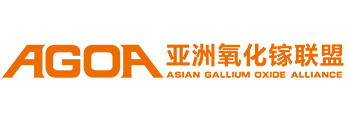

【Device Papers】High thermal reliability study of copper-based β-Ga₂O₃ Schottky diodes with thin Al₂O₃ insertion layers
日期:2025-10-28阅读:150
Researchers from the Dalian Maritime University have published a dissertation titled "High thermal reliability study of copper-based β-Ga2O3 Schottky diodes with thin Al2O3 insertion layers" in Micro and Nanostructures.
Abstract
In this paper, a 2 nm thin layer of Al2O3 is deposited between β-Ga2O3 and Cu Schottky electrodes by the ALD technique to fabricate metal–insulator–semiconductor Schottky barrier diodes (MIS-SBDs). The I–V, C-V and temperature-dependent I–V characteristics (100-300 °C) of β-Ga2O3 SBDs with and without the Al2O3 layer were systematically analyzed. Analysis of the aforementioned electrical properties reveals that devices with both structures exhibit excellent thermal stability and rectification characteristics. At temperatures as high as 300 °C, their reverse leakage current density remains at an order of magnitude close to 10-7 A/cm2, while an on–off ratio as high as 109 (JVF=2V/JVR=-2V) is maintained. Compared with MS-type devices, MIS-type devices further reduce the reverse leakage current without compromising their own thermal stability and rectification characteristics, thereby increasing the breakdown voltage. In addition, their forward current density is enhanced, which leads to a significant reduction in specific on-resistance and ultimately achieves the optimization of device performance. In terms of material characterization, atomic force microscopy (AFM) and scanning electron microscopy (SEM) were employed to confirm the uniformity of thin film deposition. Furthermore, scanning transmission electron microscopy (STEM), energy-dispersive X-ray spectroscopy (EDX), and X-ray diffraction (XRD) analyses verified that the 2 nm Al2O3 thin layer exhibits a certain diffusion barrier effect on the Schottky metal Cu, which can relatively reduce the diffusion of Cu elements into the gallium oxide substrate. This work presents an effective strategy to enhance the performance of high-power, thermally stable gallium oxide-based electronic devices.
DOI:
https://doi.org/10.1016/j.ceja.2025.100889


